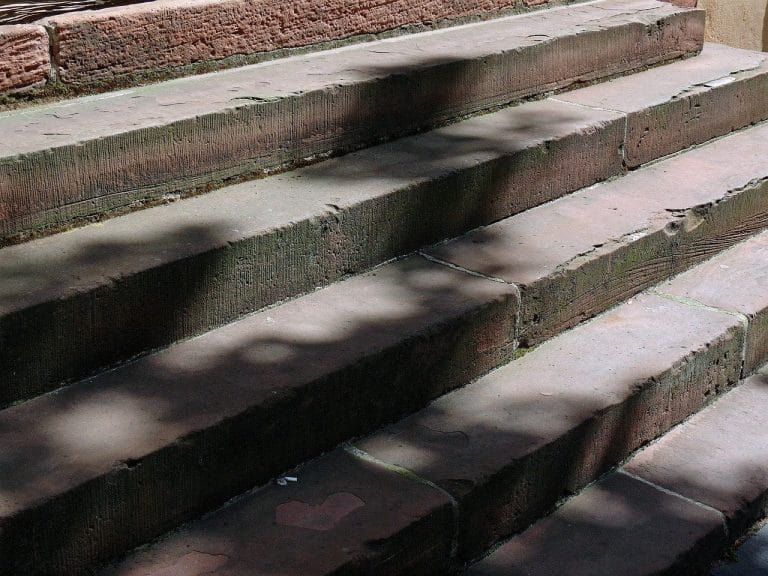construction accidents
Home / Practice Areas / Construction Accidents / Ladder Accident Lawyer
New York City Ladder Accident Lawyer
In New York and across the country, ladder accidents are a significant source of injuries at construction sites. The Occupational Safety and Health Administration (OSHA) estimates that nearly 24,882 injuries and up to 36 fatalities occur annually because of falls on stairways and ladders that are used in construction sites. Around 50 percent of these injuries are typically severe enough to warrant time off from work.
Ladder accidents can happen due to various reasons, but some occur because of defects and flaws in the ladder itself. Sometimes these defects occur at the time of manufacturing or during the design process. They may also result from inadequate warning labels. At times, ladder accidents are a consequence of negligence on the part of the site supervisors who may provide workers with obsolete, defective ladders rather than ones that are newer and safer.
Finally, the most frequent cause of ladder accidents is when a worker is directed to use a ladder in an unsafe way, which leads to the ladder lurching, suddenly giving way, or tipping, causing the worker to be in a vulnerable position.
Causes of Injuries and Fatalities due to Defective Ladders
According to OSHA estimates, several dozen people lose their lives annually at construction sites due to accidents involving defective stairs and ladders. To access tall surfaces, construction workers in New York make use of ladders and other climbing equipment. Many workers are able to perform such tasks effectively with no injuries or fatalities. But others are not so fortunate and sustain injuries on or near their ladders.
OSHA indicates that there are various ways in which ladder and stair accidents can occur. Incidents may ensue when a construction site worker uses a ladder that is the wrong size for a specific job. For instance, upon choosing or being given a ladder that is too short for the task at hand, the worker may reach and plummet from the high surface. The use of an adequately secured or a taller ladder can prevent this kind of unfortunate incident.
Also, accidents happen when construction workers use ladders that are damaged or those that are not meant to support the weights that the workers load on them. Structurally-compromised ladders may collapse, which may cause workers to fall.
Even ladders that are well-maintained can pose a danger when the cumulative weight of the worker and their equipment is higher than the maximum load that the ladder can support. This can cause the ladder to collapse under the worker.
The above represents only some ways that ladders and climbing devices at sites of construction can injure workers. Serious incidents are preventable in many instances and occur due to improper training of workers on equipment usage or being given defective climbing equipment.
Accidents that occur at construction sites can cause serious injuries. People who have been injured while working at construction sites may be able to file claims under a variety of tenets of personal injury law.
Recommendations by OSHA for Ladder Accident Prevention
OSHA offers the following guidelines for the prevention of accidents and injuries related to faulty or precarious ladders:
- Use the appropriate ladder-type for a specific job.
- Inspect the ladder visually for any apparent signs of damage, such as:
- Bent/split side rails, structural damage, missing or broken steps/cleats/rungs and damaged or missing safety features
- Grime, grease, or other substances that could lead to slips and accidents
- Stickers or paints (other than warning labels) that could cover possible damage
- Distinctly mark a faulty ladder with a “Do Not Use” sign or destruct or remove it immediately.
- Ensure that the ladder is sufficiently long to access the work surface safely.
- Never load a ladder with more weight than the capacity stated by the manufacturer or above the maximum intended load.
- Avoid the use of a ladder comprising metal components in close proximity to overhead power lines or electrical work.
Some employers mistakenly believe that their workers understand how to use ladders safely. “Improper use” is undoubtedly a cause for many accidents involving ladders, but in many cases, the workers have not been appropriately trained in the use of ladders.
Measures to Avoid Ladder Fall Incidents
- Reviewing job descriptions and circumstances in which ladders are necessary. This is important to ensure that the use of ladders and their presence remains restricted in areas where they are not needed and are unnecessarily lying around, leading to possible injuries.
- In case a ladder is necessary for a particular job, workers should be allowed its use under stringent supervision and control. Measures such as ladder placement on a stable surface and securing it from the top rung or making a person hold it from the sides should be made compulsory.
- Using ladders that are extendable to prevent stretching to reach beyond the worker’s height or leaning over.
- Ladders with defective joints or damaged rungs should be removed from the construction site.
- Urging workers on the site to follow safety measures such as using hard hats and avoiding areas of heavy construction.
Third-Party Liability for Injuries due to Ladder Accidents
In cases where contractors, subcontractors, property owners, suppliers, ladder manufacturers, or another party causes or contributes to a ladder fall, it may lead to third-party personal injury claims.
Example: The ladder manufacturer may be deemed accountable for injuries due to a ladder fall if the ladder’s locking mechanism is faulty. Your attorney should thoroughly investigate to reveal all possible liable parties with the objective of ensuring that you receive the maximum possible compensation for your present as well as future injuries.
Is it possible to identify who was responsible for the damaged ladder?
An injury victim may not have any idea about who was responsible for the damaged ladder when a defective ladder gives way. But the victim may not have to prove that any one individual was negligent under premises liability or product liability claims.
Under strict liability for defective products, the injury victim can file a claim against the manufacturer, distributor, or retailer of the defective product.
Manufacturers and Sellers of Ladders
If an injury occurs due to a faulty ladder, the victim may be able to file a lawsuit against the manufacturer, distributor, or retail seller of the ladder. The injury victim has to prove the below in a product liability case that involves a ladder:
- The defendant was involved in the production, distribution, or sale of the ladder
- The ladder had a design, production, or warning defect when it left the possession of the defendant
- The victim sustained harm
- The fault in the ladder was a significant reason for the victim’s injury
Contact Our Ladder Accident Lawyers in New York City
While not all types of ladder accidents at construction sites in New York are preventable, employers can put vital measures in place to avoid these types of falls as far as possible. Ladder injury victims that suffer due to the negligence of an employer or third party may have a strong personal injury claim.
The highly knowledgeable and experienced staff at Rosenberg, Minc, Falkoff & Wolff, LLP have represented ladder accident victims in New York for years, and have recovered maximum damages.
We can assist you in filing and pursuing a personal injury claim or lawsuit against the parties that are responsible and make sure that you receive fair compensation for your ladder fall injury as well as other losses that you sustained due to your accident. Reach out to our New York City ladder accident attorneys today at 212-344-1000 or contact us online.

Get a Free Consultation


